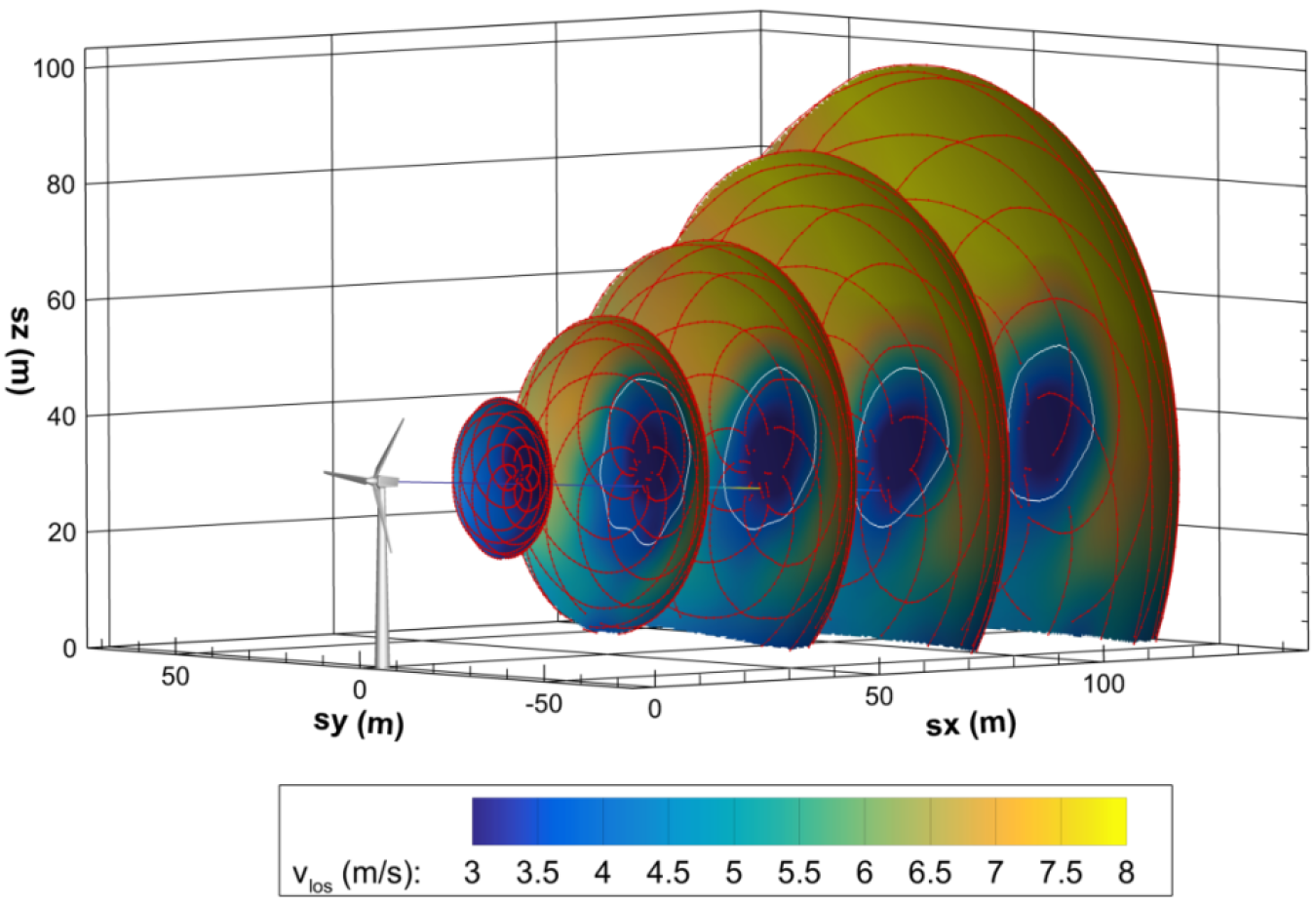Atmospheric Conditions Drive Turbine Wake Behavior at Sandia National Laboratories
Wind Energy Technologies Office
May 17, 2017
An image of the configuration of the SWiFT turbine with the lidar measuring the downstream velocity.
Results recently acquired from the Wake Steering Experiment being conducted at the Sandia National Laboratories (Sandia) Scaled Wind Farm Technology (SWiFT) facility located near Lubbock, Texas, vividly demonstrate the impact of atmospheric conditions on the behavior of wind turbine wakes. Using a unique scanning lidar from partners at the Technical University of Denmark, researchers measured the velocity profile of the SWiFT wind turbine wake at numerous downstream distances ranging from 27 to 135 meters (m) (1–5 rotor diameters) under different inflow conditions.
Developing turbine control strategies that successfully optimize plant power production and minimize damaging turbine loads requires a full understanding of the link between atmospheric conditions and wake behavior. One large driver of wind is the daily cycle of the sun rising and setting, causing heating and cooling of the Earth’s surface and the adjacent air. Daytime heating causes more mixing of the air from the ground up, creating an unstable atmosphere. As the sun sets, the mixing reduces and the atmosphere stabilizes. These two conditions dramatically affect the flow through a wind plant, creating different effects on wind turbine wakes.
Animations created from velocity scans of the turbine wake at 81 m downstream show how unstable atmospheres cause dramatic shifts in the wake, unlike stable atmospheres, wherein the wake appears locked in place. Other velocity scans show that positive or negative veer—or the change in wind direction with height—can cause the wake to skew in one direction or the other. These atmospheric changes greatly impact the wind power plant’s downstream turbines—and understanding their effect is essential for plant optimization.
“The high-resolution, open-access data currently being collected on wakes at the SWiFT facility will help improve not only our high-fidelity computational tools, but also the tools used across the wind industry to design and deploy more efficient wind plants,” says David Maniaci, the aerodynamics and verification and validation lead at Sandia.
Data from the Wake Steering Experiment will be used to calibrate and validate computational models, leading to greater knowledge of the wind flow into and through the wind plant. This knowledge can be used to forecast winds, leading to improved performance of current and future wind plants and reducing the cost of energy. A 3-hour sample set of inflow, turbine, and lidar data acquired at 67.5 m downstream that shows the inflow transition from an unstable to neutral atmosphere is now publicly available on the U.S. Department of Energy Atmosphere to Electrons (A2e) Data Archive and Portal.

